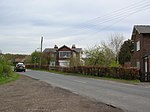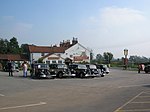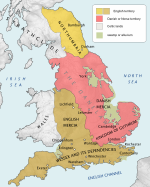Warthill

Warthill is a village and civil parish in North Yorkshire, England, six miles north-east of York and 14 miles south-west of Malton. The village has one public house, The Agar Arms, and a Church of England primary school (established in 1863), with about forty pupils. Warthill is home to St Mary's Church, which was built in the 19th century and is a good example of Victorian Gothic architecture. Brockfield Hall, a Georgian house completed in 1807, is situated nearby. It was built for Benjamin Agar by Peter Atkinson senior who worked in the office of John Carr (architect). Brockfield has an oval entry hall with cantilevered staircase. The house displays fine art and furniture, and mementos associated with the Fitzalan Howard family. There is also an unusual collection of glass walking sticks. The house is rectangular in plan, with a hipped slate roof. The most immediately noticeable feature is a large Venetian window on the first floor which is set in a semi-circular arch of stone panels. Below is an ironwork balcony with stands above the entry porch. The interior serves partly as a display space for paintings by the Staithes group of artists. The hall is now designated as a Grade II* listed building.The village was part of the Ryedale district between 1974 and 2023. It is now administered by North Yorkshire Council.
Excerpt from the Wikipedia article Warthill (License: CC BY-SA 3.0, Authors, Images).Warthill
Rudcarr Lane,
Geographical coordinates (GPS) Address Nearby Places Show on map
Geographical coordinates (GPS)
| Latitude | Longitude |
|---|---|
| N 53.9913 ° | E -0.9695 ° |
Address
Rudcarr Lane
YO19 5TL
England, United Kingdom
Open on Google Maps










